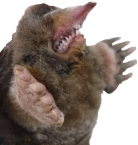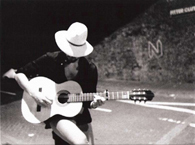Welcome to one of the most active flamenco sites on the Internet. Guests can read most posts but if you want to participate click here to register.
This site is dedicated to the memory of Paco de Lucía, Ron Mitchell, Guy Williams, Linda Elvira, Philip John Lee, Craig Eros, Ben Woods, David Serva and Tom Blackshear who went ahead of us.
We receive 12,200 visitors a month from 200 countries and 1.7 million page impressions a year. To advertise on this site please contact us.
|

|
|
Anatomy of a Flamenco Song?
|
You are logged in as Guest
|
|
Users viewing this topic: none
|
|
Login  | |
|

   
Lucerom
Posts: 60
Joined: Feb. 13 2006
From: Denver, Colorado

|
 Anatomy of a Flamenco Song? Anatomy of a Flamenco Song?
|
|
|
I was wondering if some of you can help explain the anatomy (structure, components and sequences/order) of flamenco songs, styles, or palos? I understand that Flamenco is considered “Free Flowing”, however I know that there is some level of structure to the songs.
Most of the didactic material available on the market today begin by introducing the viewer to basic flamenco techniques followed by a falseta, llamada, or remate for the student to practice the technique; then on to the next lesson. What is often missing is an explanation (by the instructor) and an understanding (by the student) of how to put all the pieces learned and practiced together to form a song. After all, what good is all the time spent practicing when the student is can only play a few phrases and not a complete song?
These are the particular questions I have in mind (please feel free to expand):
• What are the components or structure of a flamenco song? (i.e. Intro, falseta, llamada, remate, cierre, etc…)
• What is the typical order or sequence of each component?
• How do these components and their sequence apply to or vary among the different palos?
Mehdi’s Mohagheghi’s new series “Progressive Studies for the Flamenco Guitar” moves in the right direction. But I was hoping to get some feedback from the ForoFlamenco community, as well.
Thank you for your contributions
_____________________________
“Think Outside the Cajón”.
|
|
|
|
REPORT THIS POST AS INAPPROPRIATE |
Date Aug. 11 2010 15:38:05
 |
|

   
NormanKliman
Posts: 1143
Joined: Sep. 1 2007

|
 RE: Anatomy of a Flamenco Song? (in reply to Lucerom) RE: Anatomy of a Flamenco Song? (in reply to Lucerom)
|
|
|
Lucerom, I'll try to provide some basic information, although you might want to rephrase your question or maybe narrow the scope of your enquiry because I'm not sure if you're asking about singing, cante accompaniment, solo guitar or something else.
quote:
After all, what good is all the time spent practicing when the student is can only play a few phrases and not a complete song?
I don't understand what you mean by "song." A guitarist only does a "complete song" if he's singing.
quote:
I understand that Flamenco is considered “Free Flowing”, however I know that there is some level of structure to the songs.
Again, I don't know what you mean by "free flowing." It might be said for styles that aren't set to a rhythm, or it could describe the fact that singers usually sing a series of unrelated letras (verse), but nearly everything else about flamenco "songs" is highly structured.
If we're talking about cante-based flamenco, the usual arrangement, in order, is that the guitarist starts with an entrada (intro: could be a short falseta or just characteristic strumming), the singer warms up with temple or ayeo de entrada (initial vocalization: it's the ay-ay-ay stuff without any real words), the guitarist plays a short falseta and the singer sings a copla or letra (verse). From that point on, they alternate falsetas and letras, although some styles have a special ending, like soleá changing to major key and speeding up, or a malagueña ending with a cante abandolao.
Of course, if there's no singer, the guitarist is free to do as he/she likes. If we're talking about dance-based flamenco, there are other structural differences, like the silencio in alegrías, which isn't usually done if there's no dancer.
_____________________________
Be here now.
|
|
|
|
REPORT THIS POST AS INAPPROPRIATE |
Date Aug. 12 2010 7:22:24
 |
|

   
Adam
Posts: 1156
Joined: Dec. 6 2006
From: Hamilton, ON

|
 RE: Anatomy of a Flamenco Song? (in reply to Lucerom) RE: Anatomy of a Flamenco Song? (in reply to Lucerom)
|
|
|
As Norman and orson have said, this is a really open-ended question, but to your simpler question - how to string the various falsetas and stuff you have into a "song" you can play from start to finish - there's a pretty simple answer: play the falsetas in an order that sounds good to you, and in between them do some compás. In the end most flamenco guitar solos follow that basic structure - falseta, compás, falseta, compás, etc.
As with most questions someone new to flamenco has, the easiest solution to this one is to listen to more flamenco. Listen to Sabicas, Paco, Tomatito, whoever, and see how they structure their songs. Maybe an intro falseta, then some compás, falseta, and so on, and then you can end it with some chords, speed up, whatever. Listen.
Then, beyond that, there's some palo specific stuff which you just need to pick up from experience and listening. For example, alegrías traditionally have a silencio (slow section in minor) in the middle, followed by an escobilla (faster rhythmic section in major) and then speed up into a bulería. But, people performing alegrías will frequently omit or rearrange those as they please.
Hope that helps!
|
|
|
|
REPORT THIS POST AS INAPPROPRIATE |
Date Aug. 13 2010 6:38:54
 |
|

   
Lucerom
Posts: 60
Joined: Feb. 13 2006
From: Denver, Colorado

|
 RE: Anatomy of a Flamenco Song? (in reply to Adam) RE: Anatomy of a Flamenco Song? (in reply to Adam)
|
|
|
The questions from my post were from the perspective of a guitarist, although it was very interesting to learn that the perspective changes from the point of view of singer or dancer. So, based on the feedback I've received so far... I see that there really isn't any true structure other than the obvious (you don't open with cierre and close with an entrada). To my point, playing a flamenco song on the guitar is "Free Flowing" meaning it is up to the guitarist to arrange falsetas, llamada, remate, etc as they feel is pleasing to the ear. Also, the arrangement is dependent upon whether the guitarist is playing solo, accompanying a singer, a dancer, or both.
I will take a look at the links Orsonw has posted as I can research the subject more in depth.
Thank you all as always for your invaluable feedback.
_____________________________
“Think Outside the Cajón”.
|
|
|
|
REPORT THIS POST AS INAPPROPRIATE |
Date Aug. 13 2010 14:29:34
 |
|

   
gj Michelob
Posts: 1531
Joined: Nov. 7 2008
From: New York City/San Francisco

|
 Query on Compas v. Falseta (Anatomy ... (in reply to Adam) Query on Compas v. Falseta (Anatomy ... (in reply to Adam)
|
|
|
quote:
most flamenco guitar solos follow that basic structure - falseta, compás, falseta, compás, etc.
Ramparts, I maybe betraying my deep ignorance of flamenco (once again), but at the same time that is why I post here… to learn.
I always think of Compas as a time-signature, a tempo/rhythm one must respect slavishly. However, your statement delineating structure as Falseta/Compas/Falesta/Compas suggests that each, the flaseta and the compas, represents a structured phrasing of sort.
Will you be so patient to elaborate/define what is compas (other than the time signature) and what is Falseta?
On the query submitted on the thread, here are a few interesting links:
An interesting Compas analysis with metronome
http://www.previewsite.eu/flamencocompas/
and by Sal Bonavita
http://www.flamencoguitarshop.co.uk/moredocuments/flamenco-compas.pdf
and Ravenna is awesome
http://www.ravennaflamenco.com/compas/tangos120.html
_____________________________
gj Michelob
|
|
|
|
REPORT THIS POST AS INAPPROPRIATE |
Date Aug. 13 2010 16:10:57
 |
|

   
Adam
Posts: 1156
Joined: Dec. 6 2006
From: Hamilton, ON

|
 RE: Anatomy of a Flamenco Song? (in reply to Lucerom) RE: Anatomy of a Flamenco Song? (in reply to Lucerom)
|
|
|
Well, gj, I will try to respond to you in spite of my burning anger at your deep ignorance  Compás is the rhythmic structure, but it's also used to mean the way you strum chords in compás - so when you learn bulerías and ask your teacher for different compases, he'll give you different variations of the A-Bb progression, or the A-Dm-C-Bb-A, or whatever, with different strumming patterns or different closes. I think my teacher in the States called them bridges, which is probably more accurate, but I just think of them as compases. Compás is the rhythmic structure, but it's also used to mean the way you strum chords in compás - so when you learn bulerías and ask your teacher for different compases, he'll give you different variations of the A-Bb progression, or the A-Dm-C-Bb-A, or whatever, with different strumming patterns or different closes. I think my teacher in the States called them bridges, which is probably more accurate, but I just think of them as compases.
So you know what I mean, yeah? Standard, traditional structure - play a falseta, strum a few chords, play another falseta 
|
|
|
|
REPORT THIS POST AS INAPPROPRIATE |
Date Aug. 13 2010 16:18:07
 |
|

   
Ramon Amira
Posts: 1025
Joined: Oct. 14 2009
From: New York City

|
 RE: Anatomy of a Flamenco Song? (in reply to Lucerom) RE: Anatomy of a Flamenco Song? (in reply to Lucerom)
|
|
|
When playing a flamenco guitar solo, there is no such thing as a fixed order of the various components, unless you are playing a set piece, such as Sabicas' "Punta y Tacon," or Mario Escudero's "Impetu," or any composed titled set piece by Paco or anyone. With some exceptions, for example Sevillanas, etc., you can start any way you want to, with a falseta, a rasgueado passage, tremolo, etc., and continue in any random order. Listen to any guitarist accompany the cante – they just play however is comes out of their head and off their hands. That is my personal approach to solo playing as well – that way you never play any given palo the same way twice.
_____________________________
Classical and flamenco guitars from Spain Ramon Amira Guitars
|
|
|
|
REPORT THIS POST AS INAPPROPRIATE |
Date Aug. 14 2010 15:05:13
 |
|
 New Messages New Messages |
 No New Messages No New Messages |
 Hot Topic w/ New Messages Hot Topic w/ New Messages |
 Hot Topic w/o New Messages Hot Topic w/o New Messages |
 Locked w/ New Messages Locked w/ New Messages |
 Locked w/o New Messages Locked w/o New Messages |
|
 Post New Thread
Post New Thread
 Reply to Message
Reply to Message
 Post New Poll
Post New Poll
 Submit Vote
Submit Vote
 Delete My Own Post
Delete My Own Post
 Delete My Own Thread
Delete My Own Thread
 Rate Posts
Rate Posts
|
|
|
Forum Software powered by ASP Playground Advanced Edition 2.0.5
Copyright © 2000 - 2003 ASPPlayground.NET |
0.0625 secs.
|


 Printable Version
Printable Version








 Compás is the rhythmic structure, but it's also used to mean the way you strum chords in compás - so when you learn bulerías and ask your teacher for different compases, he'll give you different variations of the A-Bb progression, or the A-Dm-C-Bb-A, or whatever, with different strumming patterns or different closes. I think my teacher in the States called them bridges, which is probably more accurate, but I just think of them as compases.
Compás is the rhythmic structure, but it's also used to mean the way you strum chords in compás - so when you learn bulerías and ask your teacher for different compases, he'll give you different variations of the A-Bb progression, or the A-Dm-C-Bb-A, or whatever, with different strumming patterns or different closes. I think my teacher in the States called them bridges, which is probably more accurate, but I just think of them as compases. 
 New Messages
New Messages No New Messages
No New Messages Hot Topic w/ New Messages
Hot Topic w/ New Messages Hot Topic w/o New Messages
Hot Topic w/o New Messages Locked w/ New Messages
Locked w/ New Messages Locked w/o New Messages
Locked w/o New Messages Post New Thread
Post New Thread